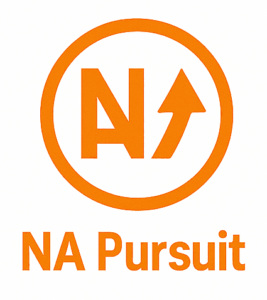Content: Are Your Hull Insurance Policies Keeping You Afloat?
Hello, marine-life-loving, business-savvy soon-to-be entrepreneurs! To be blunt with you for a moment: hull insurance is an absolute minefield, right? You’re grappling with ever-evolving regulations, unpredictable weather, and, to be honest, some very complex policy language. You’ve been there, scratching your head, how do you know if you’re really covered?
And that is why this topic is so important. And we’re not just talking about your documents here but protecting your merchant manning, your vessels, your livelihood. So think about it—behemoth container ships weathering tumultuous waters to the tiniest specialized workboat bobbing in shallow waters, whether it’s the rebar-sapping saltwater ebbing and flowing into and out of the hull or the weaves of all the cargo on-board, Hull Insurance is the proper net to catch what could potentially evolve into a devastating situation (or at least a situation that shouldn’t be devastating).
It’s also not just about evading the financial ruin that could follow an accident. It is about having the peace of mind to do what you do best, knowing you are covered. Are you currently revisiting your policies? Are you 100% certain your current strategy is working for you? Or might your strategy cost you more than it ought, putting you at risk in the meantime?
To be honest, I see a lot of businesses out there just allowing their hull insurance to cruise on autopilot and not really paying any attention to it and I don’t want you to be one of them. This post is about exposing those potential pitfalls and helping you get your insurance strategy back on track. You and I will discover if your existing Hull insurance policies are really buoying you up or are quietly keeping you from reaching the other side. Ready to dive in? Let’s go!

The Current (and Future) State of the Hull Insurance Sea
Positive Trends: Riding the Wave
- Embrace Technology: IoT sensors, data analytics, AI – you name it! Imagine: real time monitoring of vessels, predictive maintenance based on data and claims processing getting much faster. Creating all this is not just cool, it is reducing risks and increasing efficiency. For example, a company employs sensor data to detect and resolve a small engine problem on a vessel before it escalates into a big (and costly) issue, facilitating a reduction in claims and boosting vessel safety overall.
- The Rise of Green Shipping: I mean, is climate change really a thing? As more people want to travel on sustainable ships, that increases demand for insurance that protects emerging technologies, such as electric or hybrid propulsion. If you are positioned to offer these greener options, this is where you can prosper. For instance, companies providing insurance for vessels using renewable energy features, or alternative fuels, may find their customer base growing and even be able to offer more competitive rates amid less environmental risk.
- Specialization is Key : Not a one-fit-for-all anymore! We are about seeing emerging niches — luxury yachts, offshore wind farm support vessels and even right ships — and with them, the demand for dedicated insurance products. That means there’s an opportunity to really get into the weeds on you specific needs and provide a targeted policy.
Adverse Trends: Prepare for Some Choppy Seas
- No More Keel Haul — Cyber Risk is the New Pirate: Physical damage is no longer the main concern. We are talking cyberattacks on navigation systems, cargo data and ports — a total nightmare. So, this is a whole new risk organism that insurers need to be aware of, but also, you need to be very careful with your own tech infrastructure as well!
- Geopolitical Instability Is a Nuisance: Things are, er, tense globally. Trade route delays, sanctions, conflicts – all this creates uncertainty and makes it riskier and more complicated to ensure vessels. For example: Ship on stall because of geopolitical tensions = potential loss of cargo = higher risk for the insurer.
- Claims Inflation Is Biting Into the Bottom Line: The cost to repair cars and replace parts is rising, so claims are more expensive. That pressure may cause you to reconsider your pricing strategies and search for strategies to control costs.
Actionable Insights: How to Win the Game
- Invest in Tech (Duh) If you haven’t already, go all in on data analytics and AI. After all, you need to use these tools to understand risk, better claims handling and personalized products.
- Go Green or Go Home: Developing insurance products as they relate to greener shipping practices. It’s not just best for the planet; it’s best for business.
- The path of specialization: Pick one thing and take the time to become the best at it You’re not going to be everything to everyone. Concentrate on areas where you can add maximum value.
- Proteggiti Dai Cyberattacchi: Cybersecurity is not optional. Invest in protection and be sure you know what happens if you have a breach.
- Be Responsive And Informed: The geopolitical arena is unstable. You must adapt and be ready to pivot at a moment’s notice.
- Think outside the box get creative with your pricing: See where you can reduce costs without sacrificing competitive premiums.
Wrapping It Up
There is, surely, evolution happening in the Hull insurance market. There are challenges, of course, but also tremendous opportunities for innovation and growth. If you choose to embrace tech, adapt to change, and play the long-game, you will absolutely cross these waters successfully. So get out there, learn what you can and don’t be scared to follow your own path.
Healthcare:
Having a new, “extra fancy” MRI machine in a hospital. It’s not on a boat, but the high-tech gear is essential, no? Now, imagine that a pipe bursts, flooding the room. The MRI gets fried. Hull insurance? Well, that can actually help here, if you have inland marine coverage, which is sorta like hull insurance’s land-lubber cousin. It can reimburse you for damage to your precious, costly equipment, getting you back online sooner than you’d get waiting for property insurance to straighten it out.
Technology:
Consider the accuracy of those dedicated underwater robots that tech firms use for deep-sea study. They’re not ships, but they’re basically miniature, incredibly expensive boats, right? If one of those robots gets caught on something underwater or suffers a catastrophic failure that causes physical damage, that’s where hull insurance (or the marine portion of inland marine) comes into play. It will pay to have the robot repaired or replaced, protecting your tech company from a financial blow.
Automotive:
Now, imagine that instead of a manufacturer sending car parts around the world in giant shipping containers. Those containers aren’t ships, but they’re how you get your parts to the factory. If a storm at sea damages the containers (and possibly takes out your inventory too) hull insurance (usually purchased via the inland marine policy as well) would come in to cover the damage to the containers themselves. It can keep your production line being operational. You want this, surely, right?
Manufacturing:
Suppose that a manufacturing plant has a custom-built, super specialized crane it uses to lift heavy machinery onto barges. That’s not a ship, but it IS a piece of specialized marine related gear. If that crane drops something and causes its own structural damage as a result of that operation, that’s bound under your hull insurance policy, swaying closer to more often a well structured inland marine policy with a marine flavor. It’ll pay for the repair of the crane itself to get your operations on track. And you know how critical this can be, right?
Organic Strategies
Improved Data Analytics for Risk Assessment Pricing:
Businesses are pouring money into advanced data analytics platforms. What you should think of this as is crunching a hell of a lot more data than previously — not only historical claims but real-time vessel tracking data, weather patterns and even port congestion data. This enables them to price risks more freely, rather than treat them as a paintbrush. The goal? Provide more competitive premiums for lower risk vessels, whilst providing correct coverage and premium for higher risk ones. It’s a win-win for them, and the safer operators, yeah?
Emphasizing Sustainability Incentives:
A noticeable change is to provide incentives for clients practicing sustainability. If you are a shipowner that invests in fuel efficient engines or adapts green technologies, you’ll find more encouraging terms in your hull policies. This isn’t merely a case of “doing the green thing”; it’s recognizing the way sustainable practices feed through to risk profiles and resulting in a lesser incidence of incidents.
Clients Are Missing Tailor-Made Solutions:
Insurers are transitioning to a personalized solution rather than a one-size-fits-all solution. Governed custom solutions, curated post an in-depth analysis of the consumer’s exact operational profile, fleet composition and safety management systems. And that means collaborating with clients and realizing, for instance, that a short-haul coastal vessel has different requirements than a transatlantic container ship.
Inorganic Strategies
Major Investments Acquired Through Strategic Acquisitions
And some of the bigger players have simply acquired small tech firms — everything from IoT-based vessel tracking to AI-based risk assessment. A traditional insurer, say, buys a startup whose cutting-edge sensor technology can provide real-time data on the condition of a vessel’s hull or machinery. It’s about rapidly assimilating new capabilities and expertise, not building it from scratch.
Alliances to Extend the Service Menu:
Insurance companies are actively both forging strategic partnerships (with tech vendors, and even repair service providers). This enables them to provide a more comprehensive package to customers, which can range from cover for insurance, through to alerts for preventative maintenance, or to access a network of vetted shipyards. This bundling results in a sticky relationship with the clients and further extends the insurer’s value proposition.

Outlook & Summary: Charting the Course Ahead
So what is the future of hull insurance, anyway? If I were a betting person, I’d say we can expect some bumpy waters ahead, but also plenty of opportunities for smoother sailing. Over the next 5 to 10 years I reckon we will see some tech advancements, such as sophisticated risk modeling, and perhaps even AI in claims processing. That could be a game changer. And sure enough, with world events, those economic tides could turn at any time. This certainly affects risk appetites and ultimately the price you’re paying for insurance.
Hull vs. The Rest of the Marine World
However, make sure to keep in mind, hull insurance doesn’t exist in a vacuum. It’s a big piece of the entire marine insurance world, right? So the same things that impact cargo insurance, or sometimes even your liability insurance are going to have ripple effects on what you do with your hull insurance. We have to see through all the corners of the sector.
Insight: Keep Your Strategy Afloat
The biggest takeaway from this post I wanted to get across is your hull insurance strategy should be “set it” and “forget it” — more than once. You need to think proactively about risk management, seek the right types of coverage for your needs, and be willing to embrace change as the market evolves. It’s as if we are trying to keep our little boat afloat through stormy seas — you need the right kit, know your destination, and be prepared to adjust when the waves get choppy.
A Question For You
So in the final analysis, we ask the overriding question: is your existing hull insurance strategy you have now absolutely prepared to face what life brings you?






